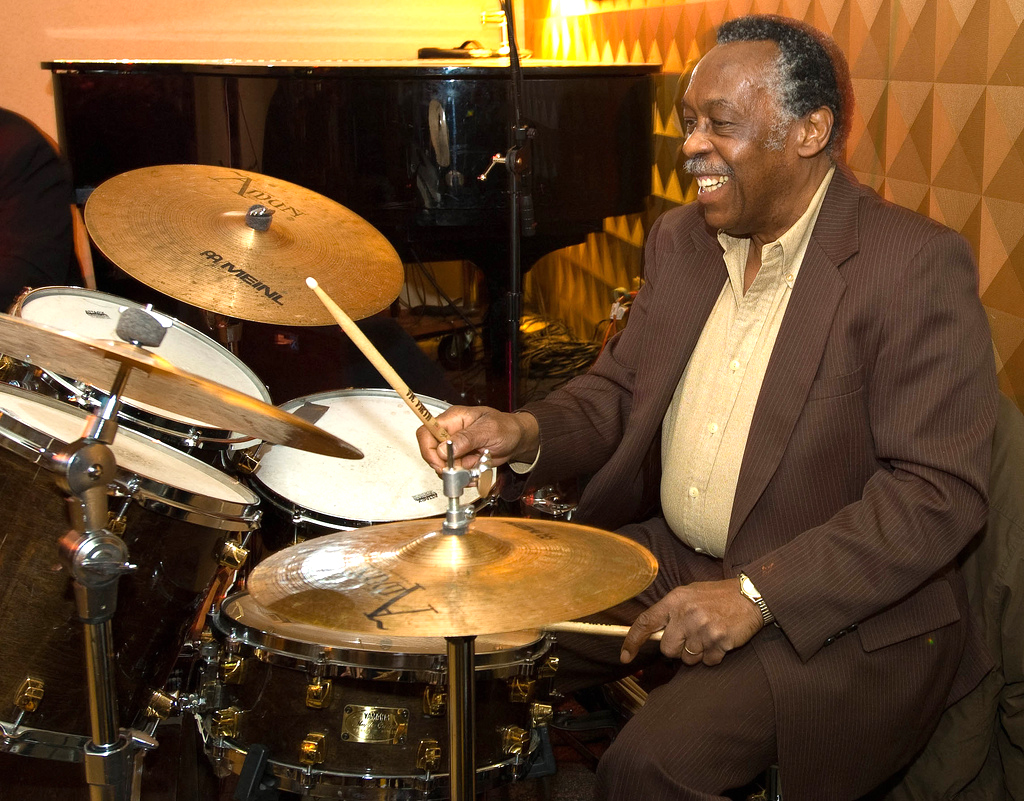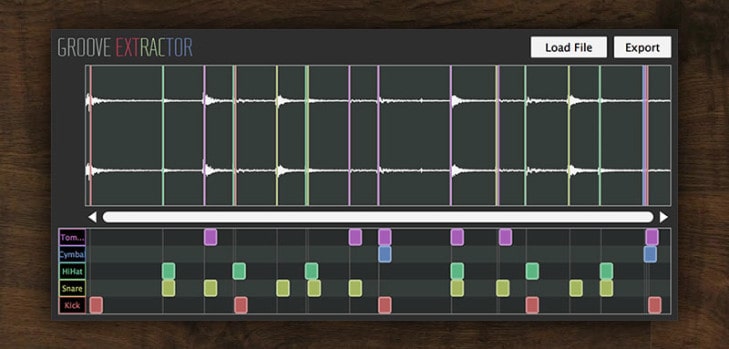How to Create Realistic MIDI Drums in Your DAW
For many musical styles and genres, creating realistic MIDI drums and patterns can be the key to success. Music technology has come a long way since the humble drum machines of the 80’s. It’s now possible to create realistic drum tracks from inside a computer that would fool even the most seasoned drummer. In this guide, we’ll take you through the various steps needed to create lifelike drum patterns.
So go boot up your DAW and grab some virtual drumsticks as we – ‘Give the MIDI drummer some‘.
1. Getting Started with MIDI Drum Patterns:
Before diving into the intricacies of drum programming, let’s ensure you’re set up correctly. MIDI, or Musical Instrument Digital Interface, is the language that allows your DAW to communicate with virtual instruments or hardware controllers. Make sure your MIDI controller is connected and configured in your DAW.
2. Drum Kit Selection and Sound Design:
When it comes to crafting realistic MIDI drums in your DAW, your choice of drum kit and sound design plays a pivotal role. This step sets the foundation for the entire production process.
Begin by selecting the right drum kit. Consider the genre and style of your music. Most DAWs offer a selection of built-in drum kits to get you started. These kits often cover a wide range of musical genres, from rock and pop to electronic and hip-hop. If you’re looking for more specialized sounds, there’s a vast library of third-party drum sample packs available. Look out for packs that offer drum one shots as these can be loaded and triggered from your sampler of choice. For more authentic-sounding drum programming try to find one shots that provide different velocities for each drum sound like those found on these packs from New Bap Sounds.
Probably the best option however is to use a dedicated drum VST. There are many to choose from but Addictive Drums 2 by XLN Audio or Superior Drummer 3 by ToonTrack are considered by many as the most advanced and sophisticated on the market.

Once you’ve chosen a kit, it’s time to dive into sound design. You can transform a stock drum sound into something unique by applying effects, layering, and tweaking parameters. For instance, adjusting the attack and decay of a snare can make it sound tighter or more explosive, depending on your desired style. Experiment with tuning, filtering, and saturation to sculpt your drum sounds.
3. Understanding Drum Grooves and Rhythms:
Understanding the nuances of drum grooves and rhythms is crucial to creating engaging and realistic MIDI drums. By delving into the rhythmic intricacies, you can breathe life into your compositions and make them groove with authenticity.
Start by familiarizing yourself with the core drum patterns, which often consist of kick, snare, and hi-hat elements. These are the building blocks of most beats, and their arrangement sets the rhythm. Each genre has its own signature grooves. For example, rock music often features a steady four-on-the-floor kick pattern, while funk leans towards syncopated, offbeat rhythms.

As you explore different genres and their characteristic drum patterns, pay close attention to the relationship between the various drum elements. The interplay of the kick and snare, the rhythm of the hi-hat, and the placement of fills all contribute to the groove. By analyzing existing songs and experimenting with these rhythmic elements, you can gain a deeper understanding of how to create similar drum patterns inside the box.
4. MIDI Drum Programming Techniques:
Now, it’s time to get hands-on with MIDI drum programming in your DAW. This step is where you bring your drum patterns to life; precision and creativity are your best friends.
In your DAW, start by creating a new MIDI track and selecting your drum kit as the instrument. With your piano roll or MIDI grid open, you’re ready to begin programming. You can either draw MIDI notes in the grid manually or use a MIDI controller to record your performance in real-time. The choice depends on your preference and the level of control you want over your drum patterns.
Precision is key in this stage. Pay close attention to the velocity of each note. Velocity refers to the strength or intensity of each drum hit and is the key to creating a convincing MIDI drum track. Real drummers don’t strike every drum with the same force, and this is what gives their playing a dynamic, organic feel. To mimic this, adjust the velocity of your MIDI notes. For example, a snare hit might have a higher velocity than a hi-hat tick to create a natural variation in the sound.
Additionally, timing is crucial. You’ll want your drum hits to align perfectly with the rhythmic grid, but remember that real drummers have a slight variation in their timing. You can introduce this human touch by subtly nudging some notes off the grid. This small but intentional deviation from perfect quantization adds a human feel to your drum patterns. Some DAWs will have a randomizing feature in the quantization settings that will automatically humanise your drums.
By paying attention to velocity and timing, you can create realistic MIDI drums and patterns that sound like they were played by a seasoned drummer.
5. Adding Variations and Humanization for truly realistic MIDI drums:
To make your drum patterns truly realistic and engaging, it’s essential to introduce variations and humanization. These elements breathe life into your beats and song arrangements, making them sound as if they were played by a live drummer.
One technique to achieve this is by implementing swing. Swing introduces a subtle groove by delaying some of the offbeat notes. This small shift in timing can transform a rigid, robotic pattern into something that grooves and flows. Experiment with different swing settings until you find the right amount of groove for your track. A more detailed explanation of swing can be found in this post; How to make 90s Hip-Hop Boom Bap Drums
Another way to add realism is by incorporating ghost notes and fills. Ghost notes are quiet, subtle hits on the drums, often the snare, that fill the spaces between the main beats. They create a sense of complexity and nuance in your patterns.
Fills, on the other hand, are short bursts of intricate drumming that can be placed at the end of a phrase or before a significant transition in the song. These elements not only add character but also serve as dynamic markers in your music.
6. Layering and Effects for Drum Realism:
Enhancing the realism of your drum patterns goes beyond the initial MIDI programming. By layering different drum sounds and applying effects, you can take your beats to the next level.
Layering is a technique where you combine multiple drum sounds to create a more complex and dynamic sound. For example, you might layer a snare drum with a clap sound to add depth and character. Experiment with different combinations to find the right blend for your track. Try adding percussive drum layers in live with no quantisation to give a more natural randomized feel.
Additionally, the strategic use of effects can transform your drum patterns. Effects like reverb, compression, and EQ can shape the sound of your drums. Reverb adds a sense of space and can make your drums sound as if they were recorded in a real room. The use of different reverbs can also give the impression that your drums were recorded in different eras. A heavily gated reverb will sell the 80s drum sound while Vintage plates and springs will help give your drums a more 60s or 70s sound.
Compression helps control the dynamics of your drum hits, making them more consistent and punchy. EQ allows you to sculpt the tonal balance of your drums, emphasizing certain frequencies for clarity and impact.
7. Recording and Editing Live Drum Performances:
Recording live drum performances is an excellent way to inject authenticity into your tracks. If you have access to a drum kit and a capable drummer, you can record real drums and then edit the recordings in your DAW to create MIDI data.
However, there’s another technique that can be equally effective: audio-to-MIDI conversion. Most modern DAWs offer audio-to-MIDI conversion tools that can analyze your recorded or found drum audio and convert it into MIDI data. This allows you to take a live drum performance and manipulate it as MIDI, giving you full control over the timing and velocity of each drum hit.
Additionally, you can capture groove templates from drum audio. This involves extracting the groove and timing information from existing drum recordings and applying it to your MIDI patterns. It’s a powerful way to infuse the feel of a live drummer into your MIDI-programmed beats. By selecting a recording with the desired groove, you can extract the timing information and apply it to your MIDI notes, creating a rhythmic feel that matches the original recording.

8. Mixing and Fine-Tuning Drum Patterns:
Once you’ve created your drum patterns, the mixing stage is where you refine and balance them to perfection. Proper mixing can make a significant difference in how your drum patterns sit in the mix and contribute to the overall sound of your production.
In order to craft realistic MIDI drums first start by balancing the different drum elements. Adjust the volume levels of each drum sound to ensure they complement each other without any element overpowering the mix. The kick, snare, hi-hat, and other elements should be well-balanced to create a cohesive drum pattern. If you have used a more sophisticated drum VST with different options for mic positions experiment with the placement and levels of the various microphones.
Panning is another critical aspect of mixing drums. Positioning drum sounds in the stereo field adds depth and dimension to your patterns. For example, you can pan the hi-hats slightly to the left and the toms a bit to the right to create a sense of space. By experimenting with panning, you can achieve a more immersive drum pattern.
Furthermore, applying EQ (equalization) is essential for sculpting the tonal balance of your drums. You can emphasize the frequencies that give each drum element its character. For instance, boosting the low frequencies of the kick drum can make it more prominent and powerful, while shaping the midrange of the snare can add clarity and presence.
Conclusion Realistic MIDI drums
Creating realistic MIDI drums in your DAW is a skill that can transform your music. By understanding the basics, experimenting with variations, and using the techniques mentioned here, you can breathe life into your drum tracks. Remember, practice and continuous improvement are key to mastering this craft so good luck and have fun experimenting.
Remember – RouteNote Create subscriptions start from as little as $2.99. You also get 10 FREE credits to spend on samples along with access to our FREE sample pack bundle when you sign-up!
